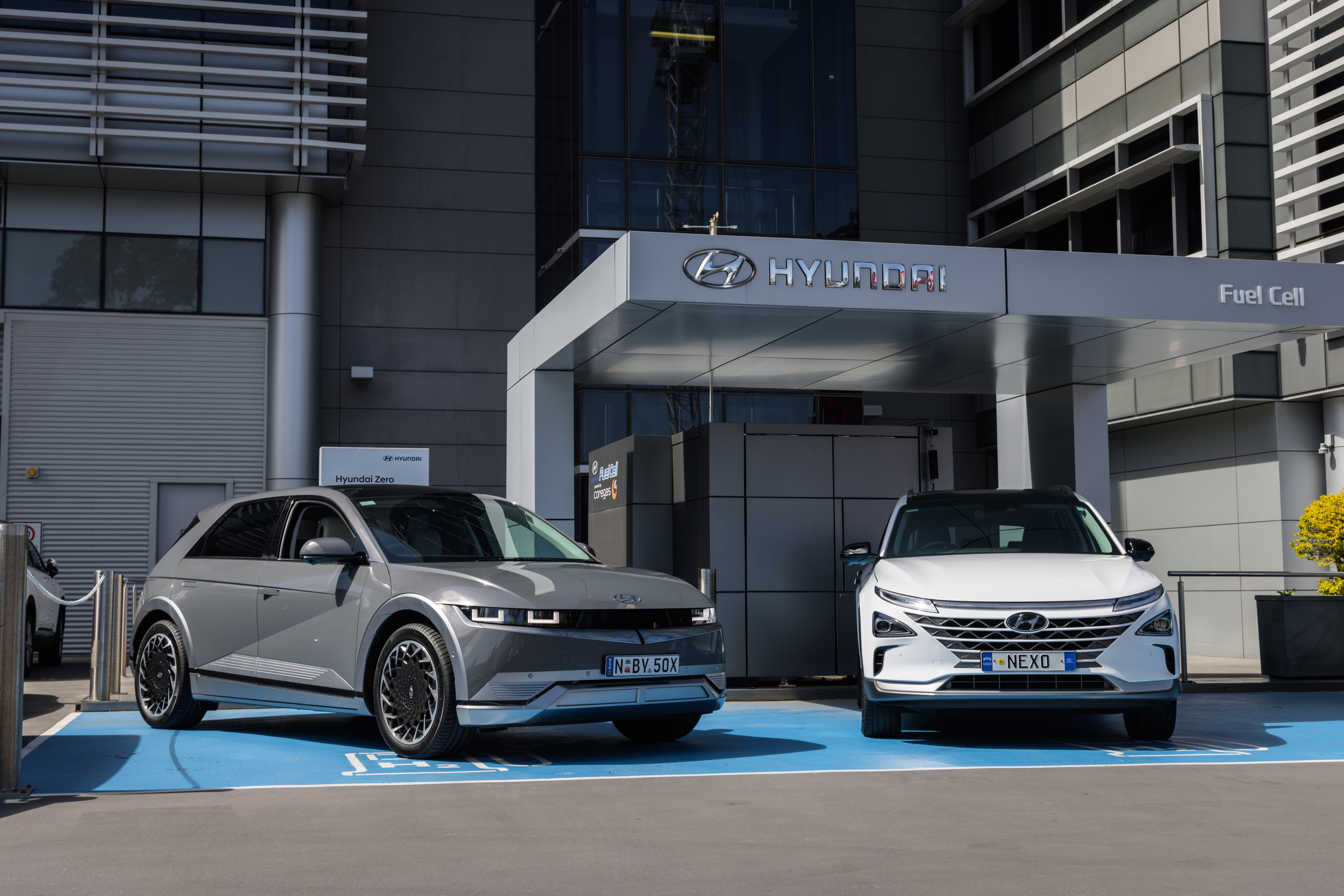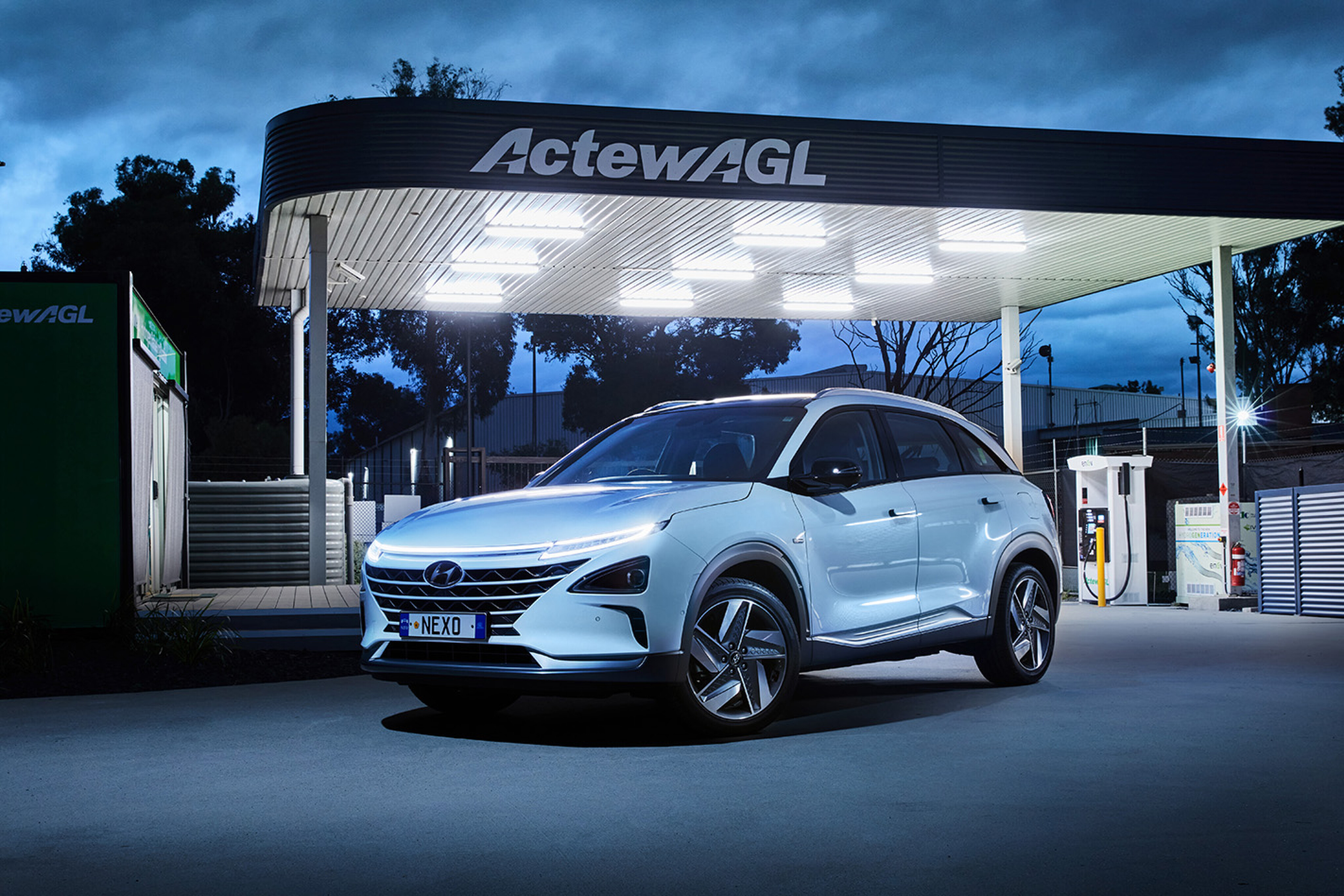
It's Blackberry versus the iPhone again.
The choice and sales of battery-electric vehicles (BEVs) in Australia have increased dramatically in just a few years, while hydrogen fuel-cell electric vehicles (FCEVs) continue to be spruiked by some politicians, carmakers and industry groups.
Which is the right solution to decarbonise transportation?
Snapshot
- Hydrogen cars have potential, but the tech still has flaws
- Carmakers and buyers have clearly prioritised BEVs
- No tech is perfect, but BEVs look set to be the main choice for passenger vehicles
It’s also no secret that hydrogen fuel-cells have long been used as an excuse for governments and lobbyists to delay vehicle carbon emissions restrictions, while hydrogen combustion engines and synthetic fuels have also been mooted as options to keep the traditional engine alive where battery EVs aren't suitable.
The question remains: which alternative fuel – BEVs or FCEVs – is ultimately best for buyers, the market and the planet?
JUMP AHEAD
- ⌛️The current state of hydrogen cars
- 🔋 Battery EVs – the good and bad
- 💧 Hydrogen EVs – the good and bad
❓ Which is right?

⌛️ The current state of hydrogen cars
BEVs have clearly been the priority of buyers and automakers globally, but some are still experimenting with the prospect of FCEVs.
Almost every major manufacturer now has a BEV in the market or on the way, and nearly every newly-founded car brand is devoted to BEVs only.
Tesla and Build Your Dreams (BYD) have rapidly grown globally in just a few years, while carmakers such as the Hyundai Motor Group, Volkswagen Group, BMW Group, Geely, and now the Toyota Motor Corporation are rolling out their BEV offerings locally.
In contrast, only two carmakers lease a new production hydrogen vehicle in Australia today – albeit for a limited number of commercial fleet buyers only: the second-generation Toyota Mirai sedan and the Hyundai Nexo SUV.
Then, there’s the question of public recharging or refuelling infrastructure… For more, read on.
Where do the carmakers stand?
It appears carmakers generally favour BEVs, but are still playing with the potential of FCEVs in the transportation sector.
Toyota in particular has been vocal in committing to offer a variety of powertrains – including petrol, diesel, BEV and FCEVs – so buyers can choose the right one for their driving needs depending on the country, yet has vowed to prioritise BEVs.
BMW is developing the iX5 Hydrogen SUV, which will also share its powertrain with the upcoming Ineos Grenadier FCEV. Others such as Hyundai, Honda, Renault and Geely are also dipping into exploring hydrogen-powered cars.
However, Kia Australia has put distance between itself and corporate sibling Hyundai – with the view that battery-electric tech is rapidly approaching the point where hydrogen will only have very few advantages.

🔋 Battery EVs: The good and bad
| BEV advantages | BEV disadvantages |
|---|---|
| Will achieve price parity with combustion-engined cars in five to 10 years (if not already today) | Generally, the higher price will remain a barrier for many |
| Already provides more than enough range for the average Australian driver (30km to 40km per day) | If you regularly drive long distances, a hybrid or PHEV may be more suitable |
| More entry-level models use LFP cathodes, which is cobalt-free, thermally safer, and longer lasting | Use of raw materials, such as lithium and cobalt, is environmentally contentious – and perceived concerns remain around safety and longevity |
| Home/work electricity is still cheap compared to petrol and diesel – despite rising costs | Public charging can be expensive depending on the network, location and even time-of-day |
| Using solar energy and battery storage systems means free and sustainable recharging at home or work | Australia’s electricity grid is mostly from coal – but renewables are growing market share |
| Public charging stations are quickly expanding across Australia and improving reliability | Public charging stations can be unreliable and out-of-order at times, with not enough locations available nationwide (for now) |
| EV model DC charging speeds are getting faster, resulting in reduced waiting times (30 minutes or less) | Most faster charging EVs are pricier to buy and you’ll often need to choose a pricier ultra-rapid charging station |
| Instant electric power, regen and engine-free quietness makes driving easy | BEVs are generally heavier due to the large battery pack |
As with all new technologies, there is no 'one perfect solution' among the alternative future fuels currently being explored.
But, the inherent advantages of battery-electric vehicles are quickly outweighing the negatives – and they're already more than sufficient for most Australians’ needs today.
While there are still barriers around the typically higher purchase price, a number of BEV models have already achieved price parity – such as the BYD Dolphin, Atto 3, MG 4 and Tesla Model 3 – as the cost to enter into a petrol- or diesel-powered car continues to rise.
With most Australians living in urban or suburban areas, BEV driving ranges are already at the point where the average commuter would never need to stop at a public charging station, simply by trickle-charging at home overnight (or only once every week or two if reliant on public infrastructure).
Real-world data has also demonstrated that battery technology today can exceed the vehicle’s lifetime, depending on use.
And, despite the higher initial environmental footprint, BEVs are still more environmentally sustainable over time, with renewable electricity sources already making up around 35.9 per cent of Australia’s grid in 2022 – and improving, according to the Clean Energy Council [PDF ↗].
However, there are still valid concerns around safety if batteries catch fire and cause a thermal runaway reaction. Despite more entry-level EVs using the lithium-iron-phosphate (LFP) battery cathode that reduces this risk, typical energy-dense lithium-ion type batteries will remain in most models for years to come.
There are also limitations around the number and reliability of public charging stations, and current BEV driving range may not be enough if you live in regional and rural areas. Therefore, regular long-distance drivers are better off with a traditional hybrid or plug-in hybrid instead (for now) as a better alternative over pure diesel.

💧 Hydrogen EVs: The good and bad
| FCEV advantages | FCEV disadvantages |
|---|---|
| Familiar and quick filling up process | Almost non-existent public hydrogen refuelling stations in Australia |
| Zero exhaust emissions (besides water), electric-only driving benefits | Most hydrogen today is not eco-friendly in production, true ‘green hydrogen’ requires a complex process of carbon capture and intensive use of renewable energy |
| No contentious large battery required | Up to 50 per cent less efficient drivetrain than BEVs to power the wheels |
| Typically longer driving range than BEVs | Hydrogen molecules can permeate away when parked, BEVs are quickly increasing range capabilities |
| Safer than petrol- and diesel-engine vehicles, despite high-pressure hydrogen tanks | Significantly more expensive to buy than BEVs, no models publicly available |
While battery EVs are still a relatively young technology, hydrogen tech is even more nascent. It does have potential, but the accelerated development and adoption of BEVs means an all-hydrogen transportation future likely won’t become a reality.
With the same local zero-emissions promise as BEVs, most FCEVs can refill within five minutes via a high-pressure pump – but stations do need to pause and take time to repressurise at times. It also uses a tiny traditional hybrid-sized battery, so it doesn’t require as many controversial raw materials as full BEVs.
Hydrogen-powered cars also provide slightly more driving range with better energy density than batteries and fuel – one kilogram of hydrogen contains about 3.4 times the energy of 1kg of petrol. For example, the Hyundai Ioniq 5 BEV offers up to 507km claimed WLTP driving range, whereas the Nexo FCEV has up to 666km.
However, while FCEVs might provide a more familiar transition from an internal combustion engine vehicle, the two models that are in Australia aren’t available to the general public (for now). Instead, they’re limited to select commercial customers (mostly government fleets) – and Toyota and Hyundai are only willing to provide a limited-time trial lease to them.
Exacerbating this, if BEVs are considered pricey, hydrogen cars are even expensive. For example, the Toyota Mirai FCEV costs $63,000 on just a three-year / 60,000km loan – with a full ownership cost for the Camry-sized sedan priced beyond $100,000 overseas.
While BEVs can use any three-pin power socket, hydrogen cars depend solely on public refuelling infrastructure. Yet, it’s almost non-existent in Australia today, with only four publicly accessible stations nationwide – in Canberra (ActewAGL), Melbourne’s north (Toyota), and Brisbane (BOC and BP).
Even with them installed, the costs to run each refuelling station are more staggering than BEV charging stations, since hydrogen requires special storage, needing to be contained either at high pressure or extremely low temperatures.

Like EV batteries, FCEV tech still has its own environmental sustainability concerns in the production process, as commercial-scale hydrogen generation today is done by reforming methane or natural gas with steam.
A true ‘green hydrogen’ process will require the entire production chain to be powered by renewable energy – but it still requires a lot of power and wasted energy to compress the gas to a pressure where it contains enough energy to drive a vehicle.
A battery-electric car can be charged up directly (via a built-in inverter if by AC power) from the grid or solar electricity and then discharge stored energy via its motors for driving.
By contrast, the hydrogen method would use that same electrical energy to convert water into hydrogen, expend more energy to compress the gas for transportation, then use more energy to distribute and pump it into a car, where a fuel cell stack then converts the hydrogen back into electricity for the motor.
Overall, the entire electricity-to-hydrogen-to-wheels process would lose around 62 per cent of energy once it actually drives the vehicle.
That’s compared to BEVs, which would only have around 20 per cent of overall losses through the grid-to-car-to-wheels process.
In short, there's a lot of indirect and circling around processes – when ultimately a hydrogen vehicle just needs pure electricity to drive.
There still may be a place for hydrogen tech in commercial applications, such as long-haul trucks, where stopping to charge isn’t feasible for businesses.
But, for now, regional motorists and regular road-trippers would be better served by combustion-engined petrol-electric hybrid cars or plug-in hybrids as a more suitable alternative to pure diesel.

❓ Which is right?
The reality is clear: the rate of development and adoption of battery-electric vehicles globally – plus complementary public charging infrastructure – is so strong that the prospects for hydrogen-powered cars becoming mainstream is looking bleak.
The 'chicken and egg' issue that is only just now being overcome with BEVs is even more prevalent with FCEVs.
While some politicians and lobbyists (mostly oil companies) continue to occasionally spruik a hydrogen-powered utopia, the current state of FCEVs is similar to BEVs from more than a decade ago – with an inefficient production process, drivetrain and expensive price barrier.
On the other hand, BEV tech is quickly evolving to provide longer driving range, better energy efficiency, faster charging, improved safety and longevity, and better environmental sustainability in the production process – just to name a few.
There may still be a place for hydrogen in our transportation sector for some applications, but BEVs are already sufficient for most Australians’ needs and are set to become the main choice of power in the coming years.
Wheels Media thanks Tony O'Kane for the original version of this story.
COMMENTS